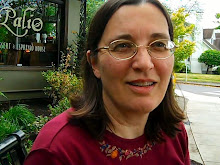There's a parallel structure in fiction that runs from the overall arc of the novel down through act, chapter and scene--and, so I've heard, down through paragraph and sentence.
There are a lot of different terms for these different aspects, but a central reality at the heart of all of them:
Character starts in her *ordinary world*, her everyday life, in which she has some problem or desire that's bigger than she's aware of. Something happens, something extraordinary that throws her out of that world, out of her comfortable set of presuppositions. The world as she knows it is gone (inciting incident).
She responds to this new world, learning its tricks and traits, acquiring new skills to deal with it. Nevertheless, it's too much for her, and it gets worse and worse, and defeat is imminent,
Until she pulls her resources together and fights back (crisis). There is an outcome to the struggle, for good or ill (climax), and she returns to a state of equilibrium with the original problem having been addressed (resolution).
Summary: ordinary world -> inciting incident -> crisis -> climax -> resolution.
Now here's what I've learned. The novel is made up of acts. Act I leads up to the inciting incident; Act II leads up to the climax; Act III is the resolution. The inciting incident is the climax of Act I, and the climax is the climax of Act II, and the process of resolution in Act II contains its own climax. In other words, each act has its own story arc, beginning with an ordinary world (the situation as it is at the beginning of the act), followed by reversal, response, decision, outcome of decision and a return to some kind of balance--the character incorporating new information--before the beginning of the next act.
It also works on a chapter level. The chapter is a series of scenes, leading through the same series of steps, but on a smaller scale and within the building of the overall arc. (In screenplay terms, a sequence is the rough equivalent of a chapter.)
So, to give an example, detective Josh Blain goes into a bar, having just interviewed the dead man's widow, to ask the bartender what he knows about the murder. Even though it's chapter 13, he begins from a point of relative equilibrium (ordinary world). He asks the bartender, gets slipped a mickey, and finds himself tied up and tossed into a cellar (inciting incident). He makes several attempts to untie himself, and then he smells smoke. They've set the building on fire with him in it. On the verge of despair, he gathers his resources and burns the rope through (crisis), then escapes just in time to get the license number of the retreating car (climax). Now he knows something more about the killer and goes on to chapter 14.
And each scene has a similar, but smaller arc of rising and fallng action. In the first scene of Josh Blain chapter 13, Blain walks into the bar (ordinary world). The bartender, instead of answering his questions civilly, tells him to get the hell out (reversal of expectations--inciting incident). Blain threatens the bartender, and the bartender threatens back (rising action). Blain collects his resources and tries a more amicable approach (crisis). The bartender gives him a drink and talks to him. Then Blain realizes that he has been slipped a mickey (climax). The world goes fuzzy and he blacks out (resolution). In the next scene, he wakes bound in a cellar with a roaring headache, and that's his next "ordinary world."
I've been told that this carries down to the paragraph and to the sentence. Is that true? Is it an optimum to work for?
Subscribe to:
Post Comments (Atom)

No comments:
Post a Comment